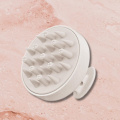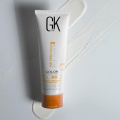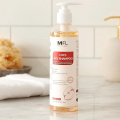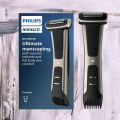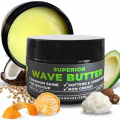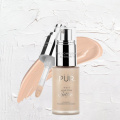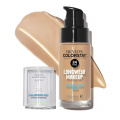Hydrogen Peroxide for Toenail Fungus - Heal Infected Toenails Naturally
Healthy nails indicate an active lifestyle. However, nails are prone to getting infected. Using hydrogen peroxide for nail fungus can be quite effective. Learn how.
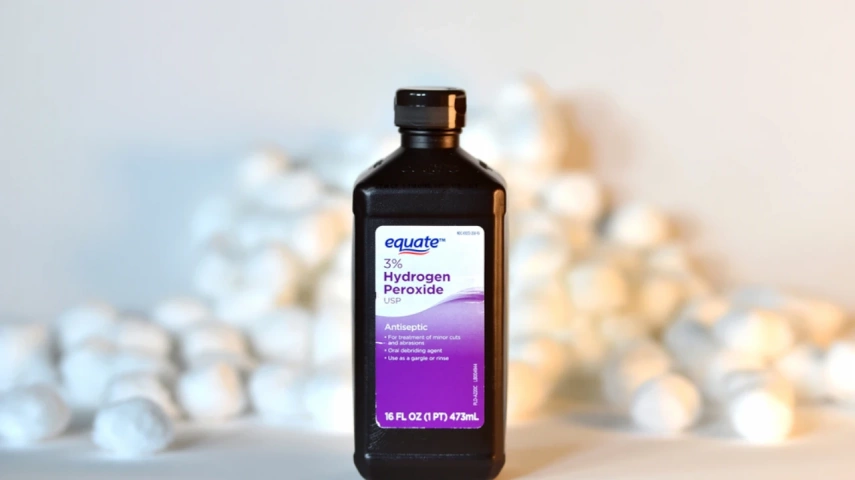
Nail care is an important aspect of self-care. But, fungus may trigger unpleasant reactions in the human body including the nails leading to various harms. Shredded, brittle, and worn-out nails may be signs of toenail fungus. Using hydrogen peroxide for nail fungus can treat the infection and clear out any impurities and bacteria that might have reached deeper into the nail bed.
An overview of fungus, what kills fungus, and how it may be prevented might also come in handy while initiating foot fungus treatment at home. It might also come to be beneficial for understanding the causes, symptoms, and the appropriate time for visiting a doctor.
What Is Toenail Fungus?
Toenail fungus, also called onychomycosis, is mainly caused by a fungus called trichophyton rubrum (1). On average, 20-25% of the global population is affected by this fungal infection (1). It occurs in nails giving them a yellowish color and may affect the underneath skin and cause pain and paresthesia (2).
Types of Onychomycosis (3):
Distal Subungual Onychomycosis:
Distal subungual onychomycosis is the most common onychomycosis that involves the nail bed and nail plate (3).
White Superficial Onychomycosis:
This form of onychomycosis appears as superficial white patches with distinct edges on the surface of the nail plate (3).
Proximal Subungual onychomycosis:
Proximal subungual onychomycosis occurs when the fungal organism enters via the cuticle and the ventral aspect of the proximal nail fold (3).
Endonyx onychomycosis:
In this form of onychomycosis, the fungus invades the nail plate without causing any inflammation (3).
Causes of Toenail Fungus (2), (4), (5), (6):
- Humidity
- Nail trauma
- Genetic predisposition
- Occlusive and ill-fitting footwear
- HIV
- Diabetes
- Improper peripheral circulation
- Local factors like climate
- Family history of onychomycosis
- Excessive sweating
- Constant exposure to water, soaps, and detergents
- Age
- Mechanical distortion
- Reduced rate of longitudinal hair growth
- Thinning of the nail plate
- Poor capacity for tissue repair
- Diminishing vascular supply
- Excessive use of public baths and gymnasiums
- Use of chemotherapeutic agents
- Lack of foot hygiene
- Molds and yeasts
- Nail biting
- Body perspiration
Symptoms of Toenail Fungus (2), (5):
- Discoloration of the nail
- Thickening of the nail plate
- Onycholysis (separating of the nail from its nail bed)
- Nail hardening
- Itching or redness
- White, yellow, brown, or black toenail
Is Hydrogen Peroxide an Effective Treatment For Toenail Fungus?
Hydrogen peroxide is an eco-friendly, non-toxic oxidant with good bleaching effects (5). It’s harmless to humans when used in low concentrations (5). Hydrogen peroxide has also proven to possess more ungual enhancer properties as compared to topically applied drugs (6) and, is thus preferred for its capability of offering painless treatment. After persistent cleaning, observe your toenail and notice if the symptoms like brittleness, discoloration, itching, and excessive thickness of the nail are reduced. If these symptoms have reduced but not gone completely, chances are your toenail is still infected by the fungus. However, it also means that the toenail fungus is dying. Apart from that, when the nail attains its natural color and starts growing like before, that also indicates your toenail has healed.
How to Clean Your Foot Using Hydrogen Peroxide?
Modified Haneke Procedure (7):
Step 1: Soak the foot with the infected toenail in lukewarm water for 15-20 minutes.
Step 2: Drive a punch (almost 3mm) through the pre-soaked nail carefully without traumatizing the nail bed. To ensure you don’t get hurt, do it slowly.
Step 3: Remove the cut edge of the nail and observe the underside of the nail bed.
Step 4: Apply 1-2 drops of hydrogen peroxide using a Q-tip to clean the nail bed. Doing that will ensure the nail bed is cleaned properly.
How to Use Hydrogen Peroxide to Treat Toenail Fungus?
Method 1: Applying hydrogen peroxide directly on the toe
Ingredients You Need:
4-5 drops of hydrogen peroxide
Clean cloth/cotton swab
Steps To Follow:
Soak your foot with the infected toenail in lukewarm water. Put 3-4 drops of hydrogen peroxide on a cotton swab and wipe the toenail with the fungus with it. Allow it to sit there for 20-30 minutes. Clean with warm water. Avoid the contact of hydrogen toenails with the skin around your toenail.
Frequency of Usage:
You can repeat this 2-3 times in a week.
Method 2: Hydrogen peroxide with water
Ingredients You Need:
1/8th cup of hydrogen peroxide
4-5 tablespoons of water
Steps To Follow:
Take 1/8th cup of hydrogen peroxide and 4-5 tablespoons of water in a small bucket or tub. Mix well. Soak the foot with the infected toenail in this for 15-20 minutes. Wash with warm water and let it dry.
Frequency of Usage:
You can do this thrice in a week.
Additional Tips for Treating And Preventing Nail Fungus
Tavaborole, an antifungal agent, has been proven to treat mild and moderate onychomycosis effectively (2). Amorolfine 5% nail lacquer, is another antifungal agent that has been proven to cure fungus and promote nail growth rapidly (8). Terbinafine is also quite popular for curing toenail fungus with fewer applications (9).
Toenail fungus can be cured naturally at home. Here are some home remedies for treating toenail Fungus.
Apple Cider Vinegar:
Apple cider vinegar has antifungal properties and creates fungicidal effects (10).
- Mix one part of vinegar with two parts of water in a tub or small bucket.
- You can add a few drops of essential oil like lavender oil to it for a pleasant smell.
- Soak your feet in the tub for 20-25 minutes.
- Wash it off with warm water.
Frequency of Usage: You can do this once a week.
Essential Oils:
Essential oils like clove oil, oregano oil, thyme oil, cinnamon oil, and mint oil have antifungal activity and inhibit the natural budding process due to the destruction of membrane activity (11). Among these, clove oil has proven to be most effective for inhibiting fungal growth (12). While cinnamon oil showed a great fungi inhibition concentration (12). Apart from these, the essential oils of orange, grapefruit, mandarin, and lemon have a great capacity for reducing fungal activity (13).
- Take the appropriate amount of carrier oil and add 3-4 drops of essential oil to it.
- Mix well and apply on the affected toenail with a cotton swab.
- Alternatively, you can also add 4-5 drops of any essential oil to your bath bucket before having a bath.
Frequency of Usage: You can do this thrice a week.
Ginger:
Ginger has antioxidant and anti-inflammatory properties and offers a broad antimicrobial spectrum against different microorganisms (14).
- Add 1-2 pieces of garlic to the vegetables during cooking.
- You can also rub the whole garlic or its paste on the infected toenail but that might not be a pleasant experience.
Frequency of Usage: You can include garlic in your cooking daily but avoid rubbing it on your toenail more than once.
Mushrooms:
Mushrooms have strong antibacterial and antifungal properties and thus can help in combating different fungal and microbial infections (15).
- Include mushrooms in your diet.
- You may add them to your normal veggies, and salads or consume them directly after frying/boiling them.
Frequency of Usage: You can consume mushrooms every day.
Tea Tree Oil:
Tea tree oil has proven to be a potential natural antifungal agent (16). It shows antifungal activity against a range of fungi (17).
- Take the appropriate amount of tea tree oil on a cotton swab.
- Apply it gently on the infected toenail and let it sit there for 40-45 minutes.
- Wash it off with warm water.
Frequency of Usage: You can use tea tree oil on the infected toenail daily
Lavender Oil:
Lavender oil shows antibacterial, fungistatic, and fungicidal properties and helps in reducing and spreading fungal progression, as well as controlling germ tube formation (18).
- Add 3-4 drops of lavender oil to a carrier oil.
- Mix well and apply on the affected toenail with a cotton swab.
- Let it rest there for an hour.
- Wash it off with warm water.
Frequency of Usage: You can do this daily.
Here are some of the prevention tips that may aid in preventing toenail fungus:
- Trim nails straight
- Use a clean nail cutter
- Clean and file your nails weekly
- Maintain good footwear hygiene
- Wear neat and tidy socks
- Wash your feet after putting off socks and footwear
- Keep your feet light
- Avoid tight and uncomfortable shoes
Side Effects of Using Hydrogen Peroxide for Toenail Fungus Treatment
The high concentration of hydrogen peroxide is harmful to human cells (19).
It may cause (20):
- Redness of the skin
- Skin damage
- Blistering
- Blanching
- Itching
- Stinging
- Rashes and swelling
Conclusion
Nails are the shields of our hands. But, once they get infected, the need to cure them is urgent. Toenail fungus doesn’t have any serious implications. However, it’s both discomforting and unpleasant to experience. With so many natural home remedies available, using hydrogen peroxide for nail fungus has gained immense attention. By applying hydrogen peroxide in low concentration to the infected nail, we can clean out the fungus. However, we have to be very careful as hydrogen peroxide does have some side effects like skin blistering and blanching.





 JOIN OUR WHATSAPP CHANNEL
JOIN OUR WHATSAPP CHANNEL



































